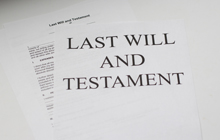Tax pipeline planning: A Canadian tax lawyer's guide and case study

A pipeline plan is a tool used to avoid paying tax on dividends to pay tax on capital gains explains David J Rotfleisch
Background Tax Pipeline Planning
A "pipeline plan" or "pipeline planning" are terms expert Canadian tax planning lawyers use to identify a post-mortem tax planning technique. The idea behind the pipeline is to reduce taxes payable on death by having the accrued gains on shares taxed as a capital gain in the Estate, rather than a deemed dividend on redemption. Generally, capital gains have preferred tax consequences because of the ½ inclusion rate. That means that only half of the capital gain is considered taxable capital gains. Hence, the non-taxable portion of the capital gain is completely tax free. On the other hand, dividends, including deemed dividends, are fully taxable.
The 50% tax inclusion rate creates a taxpayer preference for capital gains. The goal of tax planning, of course, is to reduce overall tax payable and if tax planning to create capital gains instead of dividends would reduce taxes, then it may be advisable to employ a pipeline plan technique.
The Base Case: Share Redemption Without a Pipeline Tax Plan
To understand the benefit of a pipeline plan, it is important to present the alternate - the base case. In the base case, the Testator ("T") passes away while owning shares of a business ("Opco"). Assume that the fair market value (FMV) of the shares is $100. However, the adjusted cost base (ACB) of the shares as well as the paid-up capital (PUC)of the shares is $0. Adjusted cost base is the amount that the purchaser paid for the share. On the other hand, PUC is a calculation that begins with the stated capital. The stated capital is a corporate law term that represents the original aggregate amount paid to the Corporation to acquire the shares outstanding.
To take an example, if A pays to Yesco $10 for 10 shares of Yesco, then the PUC and ACB of the shares will both be a total of $100, or $10 per share. If B comes along and buys 5 shares from A from $20, B's ACB will be $20, but the PUC of the shares does not change. That is because PUC (generally) represents the stated capital of the corporation, or how much shareholders have actually paid for treasury shares of the corporation. To use the same example, if C purchased 10 newly issued shares of Yesco for $20, the total PUC would be $300 ($100 from A's purchase and $200 from C's purchase for a total of $300). Because PUC is an average per share, you would use the total PUC and divide it between the total amount of shares: $300 / 20 shares = $15 per share. Even though B never purchased shares from the corporation, B's shares equally have PUC of $15 per share.
Using the same example, assume A is the sole shareholder of Yesco. The FMV of Yesco is $100 and the PUC and ACB is $0. If A were to die, Section 70(5) of the Income Tax Act (ITA) deems there to be a disposition of all of A's capital property. Hence, the shares are deemed "sold" at their FMV. Now, instead of A owning the shares, A's Estate owns the shares. Because the Estate received them after tax was paid, the Estate's ACB in the shares is now also $100. However, because no additional funds were input into the corporation, the PUC remains at $0.
At this step, the Estate has a significant problem. In order to distribute funds, it will need to either sell or redeem the shares. If the shares are sold to a third party, then no issue arises. However, because Yesco is a closely held small business, it is unlikely that an investor would wish to purchase the business. As such, the Estate has no choice but to redeem the shares. Pursuant to 84(3) of the ITA, the Estate must pay a dividend equal to the amount the redemption ($100) exceeds the PUC ($0) of the shares. As such, the Estate must pay taxes on the entire value of the dividend. As a result, A paid significant capital gains tax on death, and A's estate is forced to pay tax on the dividends paid out as a result of redemption. This is not an optimal scenario as there is double taxation.
Before proceeding to intricacies and benefits of a pipeline plan, it is important to note that there is a caveat to the double taxation problem. Section 164(6) (see our article on the topic) allows the Estate to use the proceeds of redemption to offset taxpayer's (A) capital gains. In our example, there is a deemed dividend on the amount the redemption proceeds ($100) exceeds the PUC ($0), = $100. Further, the redemption also results in a disposition of the shares by the estate for the proceeds of disposition equal to the redemption price ($100) minus the deemed dividend ($100) = ($0). Now, because there is $100 of ACB in the Estate's shares, one must reduce the proceeds of disposition ($0) by the ACB of the shares to identify whether there is a potential capital gain or loss. Here, there is a $100 capital loss for the Estate. Section 164(6) allows the Estate to use this loss to offset the original capital gain of the taxpayer. As a result, the taxpayer A does not incur a capital gain, but the Estate incurs tax on the deemed dividend.
Unfortunately, while there is a reduction in tax resulting from capital gains, the result is paying tax on dividends when there is the potential to pay capital gains instead. A pipeline plan is a tool used to avoid paying tax on dividends and pay tax on capital gains instead.
Using the Pipeline: A Case Study
At its core, the pipeline contains a simple strategy: pay taxes on capital gains rather than on dividends. After the 70(5) deemed disposition due to A's death, the shares are held by the Estate. Because A has paid taxes on the accrued gains, the Estate acquires the shares with an increase to the cost-base up to the amount of tax paid. In our example, A would have $100 of capital gain, or $50 of taxable capital gains. Likewise, because the gain has been paid for, the Estate would acquire the shares with an ACB of $100. However, the PUC remains at $0, because the shares were neither purchased from the corporation, nor was there a capitalization (the shareholder providing monies are assets to the corporation).
At this stage, the base-case, the share redemption method would redeem the shares and thereby incur a dividend. The pipeline plan, however, works as follows:
- A new corporation, Holdco, is incorporated. Usually Holdco has nominal value, such as $1. This means both the PUC and ACB of the shares of Holdco are nominal as well. Assume that there is 1 share for a FMV, ACB, and PUC of $1.
- Shares of Yesco are sold to Holdco in exchange for a promissory note. It is important to value the promissory note equal to the value of the shares. Otherwise, there may be tax consequences such as a shareholder benefit, which is taxable.
- Yesco declares a dividend and distributes the dividend to Holdco. Because inter-corporate dividends (a dividend between corporations) are generally tax free, no tax is paid on the dividend flowing from Yesco to Holdco.
- Holdco uses the dividend to repay the promissory note back to the Estate.
The result is that the monies have been extracted from Yesco to the Estate (through Holdco) and the promissory note has been paid off. While both Holdco and Yesco exist, they hold minimal value as the cash has been extracted to the Estate.
The result is that the value of the operating business Yesco has been extracted to the Estate without paying tax on the dividend. Instead, the only tax paid results from the deemed disposition as a result of the taxpayer's death. Because of the inclusion rate, it is likely that A and A's estate reduced their respective tax bills by a significant amount, justifying the use of the pipeline.
David J Rotfleisch, CPA, JD is the founding tax lawyer of Taxpage.com and Rotfleisch & Samulovitch P.C., a Toronto-based boutique tax law corporate law firm and is a Certified Specialist in Taxation Law who has completed the CICA in-depth tax planning course. He appears regularly in print, radio and TV and blogs extensively.
With over 30 years of experience as both a lawyer and chartered professional accountant, he has helped start-up businesses, cryptocurrency traders, resident and non-resident business owners and corporations with their tax planning, with will and estate planning, voluntary disclosures and tax dispute resolution including tax audit representation and tax litigation. Visit www.Taxpage.com and email David at david@taxpage.com. Read the original article on Mondaq. Photo David Rotfleisch courtesy Rotfleisch & Samulovitch P.C.









(0) Comments